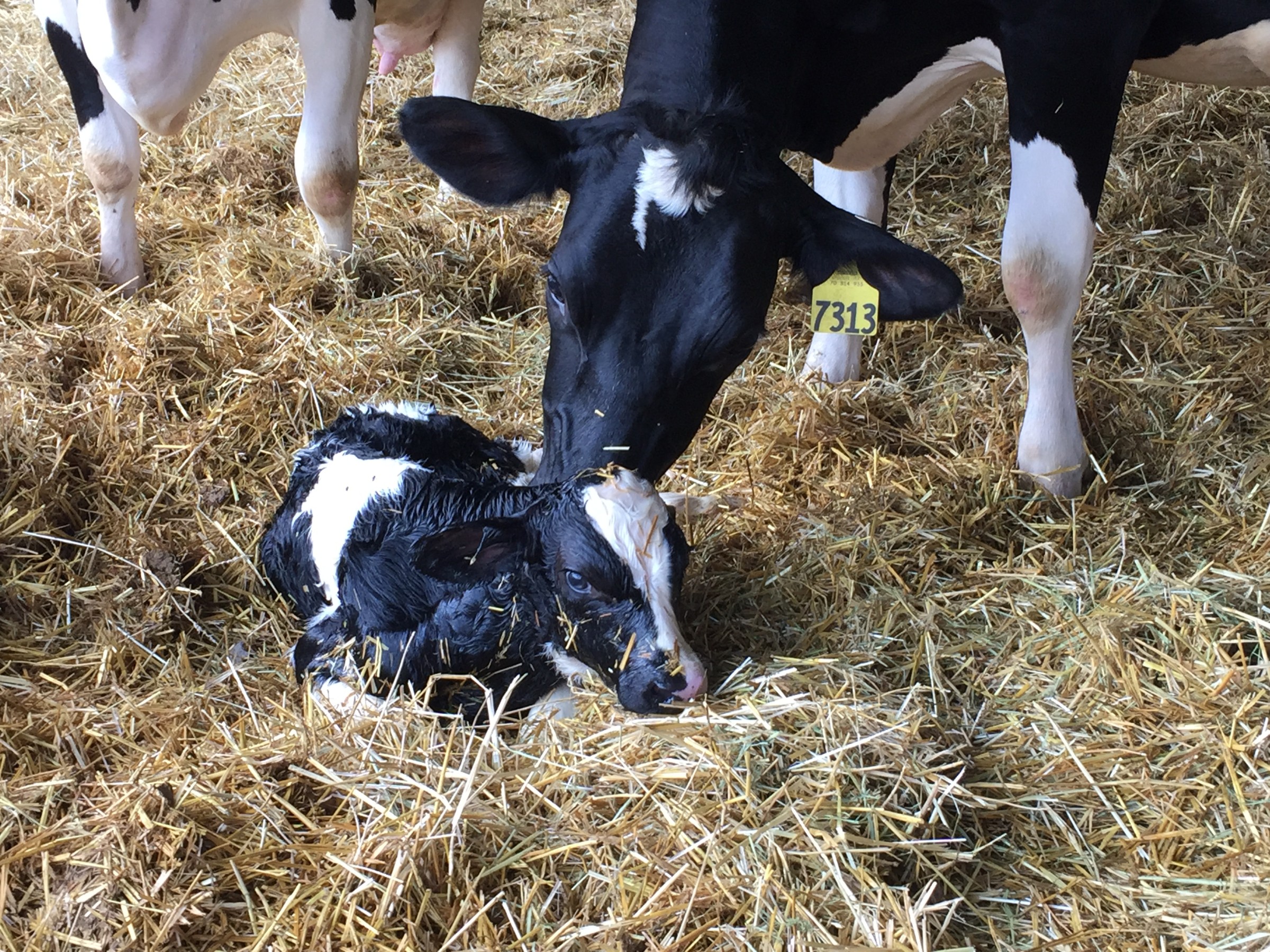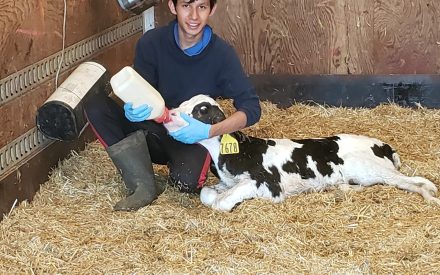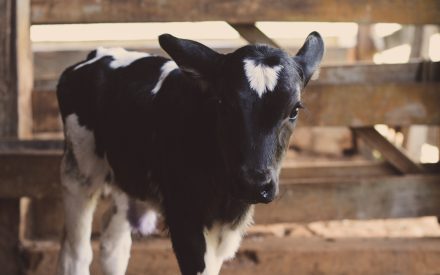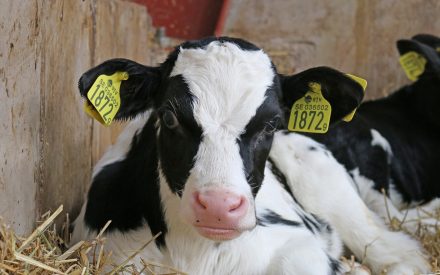A sound colostrum management program should be the cornerstone to every farm’s calf management program. Calves are born with a naive immune system, one that does not have enough circulating antibodies to help fight disease. Because of this they are highly susceptible to disease for the first few weeks of life.
Calf immune system and passive immunity
Calves are born with little or no immunoglobulins and rely on colostrum to provide them with these factors. Calves need to receive adequate amounts of high quality, clean colostrum shortly afterbirth, allowing the antibodies (immunoglobulins) to be absorbed through large openings within the intestine and enter the calf’s bloodstream. This transfer of passive immunity is needed to achieve immediate immune protection against infectious diseases until the calf’s own immune system can begin to produce antibodies after 4 weeks of age. Failure to absorb the antibodies from colostrum can result in low levels of circulating antibodies in the blood and is called “failure of passive immunity.”
Evaluating passive immunity
To ensure calves have received adequate amounts of antibodies, a blood sample can be analyzed for IgG levels within the first 7 days of age. The best method is to submit blood samples off-farm for laboratory analysis, however this can be costly. On-farm, a Brix refractometer can be used to evaluate serum IgG or total protein serum for evidence of passive transfer.
| Passive immunity categories with equivalent measurements | |||
| Serum IgG (g/L) | Total protein (g/L) | Equivalent Brix (%) | |
| Excellent | >25.0 | >6.2 | >9.4 |
| Good | 18.0-24.9 | 5.8-6.1 | 8.9-9.3 |
| Fair | 10.0-17.9 | 5.1-5.7 | 8.1-8.8 |
| Poor | <10 | <5.1 | <8.1 |
| Source: J. Lombard, UDSA, 2020 |
Failed transfer of passive immunity
Poor or failed passive immunity is associated with increased calf morbidity and mortality, and decreased growth. Research has also shown poor passive immunity can lead to less productivity later in life. Thus, it is important that calves receive adequate amounts of colostrum within the first few hours of life.
If you are not achieving a minimum of 70% of calves having “excellent” or “good” passive immunity, evaluate the colostrum management and calf processing protocols to determine the reason and make the appropriate changes to ensure the transfer of passive immunity to the newborn calf.
- Calf did not receive enough colostrum. Calves should receive 10 to 12% of their body weight in colostrum during the first feeding. This equates to approximately 4 quarts for a 90 pound calf. A second feeding of colostrum of the same volume should be provided 10-12 hours later. If the calf will not drink the colostrum on its own, provide colostrum through an esophageal tube feeder.
- Calf did not receive colostrum soon enough. Colostrum should be fed within the first 3 hours of life. Antibodies from the colostrum are absorbed through large openings within the small intestines. These large openings begin to close immediately after birth; and within 24 hours no longer allow antibodies to transfer from the small intestine to the bloodstream.
- Colostrum not harvested cleanly. Colostrum contaminated with bacteria or other organic material like manure, bedding, blood, etc., can limit the absorption of colostrum antibodies. High levels of bacteria in colostrum may bind free antibodies in the gut and directly block uptake and transport of antibodies across the intestinal lining.
- Colostrum quality was inadequate. If the colostrum reading of antibodies is lower than 22% on a Brix refractometer, the colostrum is of low quality and should not be used for the first feeding. University of Minnesota School of Veterinary Medicine’s Sandra Godden, provides reasons for poor colostrum quality, which with management changes can improve future colostrum production:
- A reduced dry period. Large amounts of antibodies and other immune factors are selectively transferred from the bloodstream of the cows into the colostrum starting 5 weeks prior to calving and more so in the last 2 weeks before calving. Reducing the dry period to less than 45 days may jeopardize the amount of antibodies transferred into colostrum.
- Poor nutrition of the dam during the dry period. Formulate the energy levels of diets fed to dry cows at proper NRC recommendations. With a high energy diet, colostrum quality increased with higher energy supply of dams.
- Evidence suggests periods of heat stress can reduce quality of the colostrum, especially in heifers.
- Cows leaking colostrum or pre-milked prior to calving leads to onset of premature milk production and resembles more like normal milk than colostrum.
- Age of cow. First-calf heifers tend to produce less colostrum that is lower in quality than older, mature cows.
- Thin, watery colostrum.
- Dam’s colostrum production. Dams producing high volumes of colostrum, over 18 pounds, at their first milking will have lower antibodies concentrations than those who produce less. Concentrations of antibodies become diluted with higher production of colostrum.
- Delay in colostrum harvest from the dam. Antibody levels are the highest immediately after calving ang at first milking. Levels of antibodies drop quickly in subsequent milking as colostrum production transitions to milk.


 ▶️ Watch: New Concepts in Colostrum Feeding for Dairy Calves
▶️ Watch: New Concepts in Colostrum Feeding for Dairy Calves Colostrum is critical after calving
Colostrum is critical after calving The overview of the digestive system of the calves
The overview of the digestive system of the calves Up your colostrum game
Up your colostrum game


